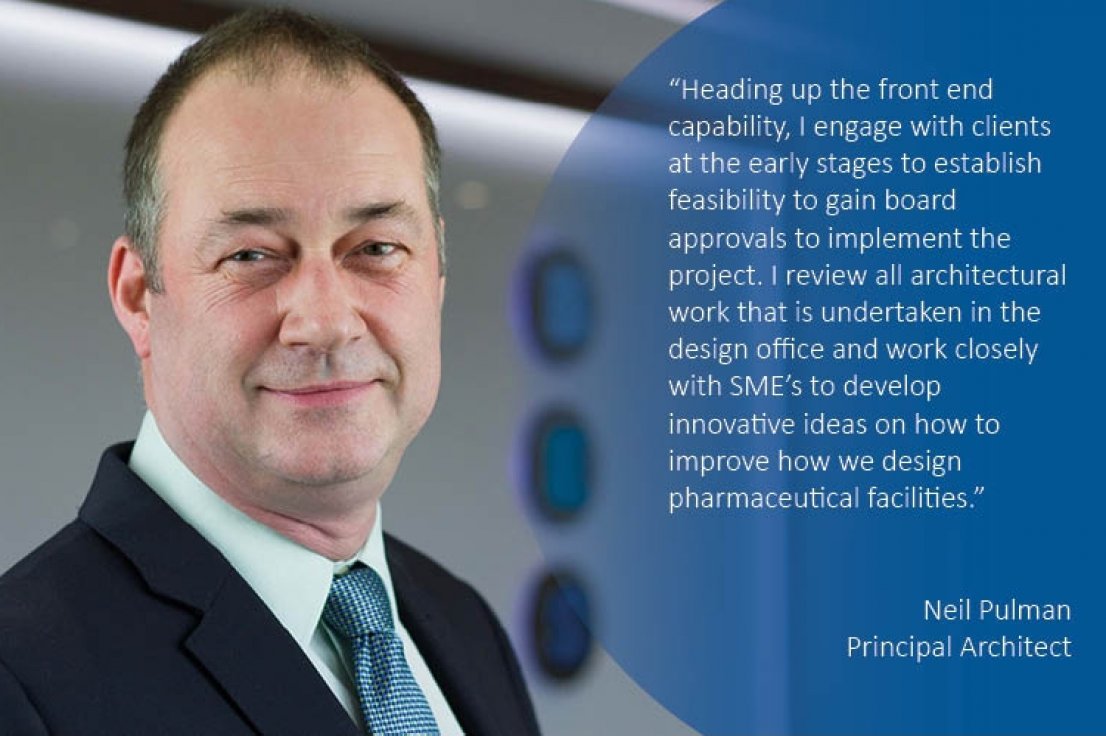Meet Our Design Team - Neil Pulman
21/11/2018

As part of our campaign ‘Meet BES Design Team’, we’d like to introduce Neil Pulman, our Principal Architect.
Neil guides our multidisciplinary design teams and clients to ensure effective design of large scale, complex projects with a focus on satisfying client requirements beyond regulatory compliance, to create effective buildings. Neil’s work is mainly centred around the feasibility and concept stages of design with an emphasis on site and master planning, and building organisation. His experience allows him to break down clients complex requirements in to simple components to provide eloquent solutions that become easy to construct.
Here, Neil answers questions about his role, the current projects he’s working on and industry challenges.
Tell us about your role and what you do?
I am the principal architect responsible for the design of projects within BES. Heading up the front end capability, I engage with clients at the early stages to establish feasibility to gain board approvals to implement the project. I review all architectural work that is undertaken in the design office and work closely with SMEs to develop innovative ideas on how to improve how we design pharmaceutical facilities.
What attracted you to BES?
I have been a practitioner in major companies and helped them grow in many instances. I found BES to be an ambitious organisation but not reckless in their pursuit of growth, with a very stable financial positon. This was a good time to start and help them develop a wider service offering.
What’s a regular day like for you now?
I learnt at university that design is 10% inspiration and 90% perspiration, aka attention to detail. So my typical day is spent reviewing the detail information we produce to confirm that the original idea works and works well. But no two projects are the same so it can be quite varied. From checking that materials and people can circulate through a building unimpeded, to assessing the deflection or vibration in floors supporting sensitive equipment. Client liaison and service proposals also form a large part of my diurnal, this is the first stage of understanding the project requirements therefore its worth devoting the right amount of time to.
What excites you about working in the industry?
I get the greatest reward from solving client’s problems, with the ultimate satisfaction from seeing a finished building that’s used properly as testament to the good resolution of the programme. I am fortunate enough to pass buildings today that I have worked on that have stood the test of time
What are you working on at the moment?
Currently I am just completing the office for Astra Zeneca – this is an interesting project where we are using permanently relocatable buildings made off site to minimise disruption on the site during the construction period so the client’s operations interruptions are kept to a minimum. This type of construction isn’t usually utilised on projects of this nature and we have had to make some modifications to the way they are made, but the results are proving positive and worthy of reusing for other projects.
What do you like the most about your job?
The variety of things I work on and solving problems; one day it’s offices, then clean rooms and then a logistics depot. They all have their own unique problems but the satisfaction that you feel when you have achieved a good design is immense.
What would you say are the biggest challenges for you at the moment?
One of the biggest challenges at the moment is Brexit; we don’t know how this is going to change the way pharmaceutical products are going to be transported or stored within Britain. We can see its having an effect now but won’t be able to qualify it until after ‘a deal’ or ‘no deal’ is complete. This may then be a reactionary time, but interesting in the new challenges it will bring.
Another key challenge is ‘Opex v Capex’. The industry is still preoccupied with capital cost of projects as a result of the global recession. Whilst it is well documented that the operating cost of buildings over their lifetime is far more than the cost to build, there is a direct correlation between capital expenditure reducing operational costs. It is common that pharmaceutical buildings will need alteration and adaption for new processes during their lifetime low capitol cost builds are typically more expensive to adapt. Achieving the correct balance of flexible, energy efficient buildings that are fit for purpose throughout their life with low operating costs is the next challenge.
What would you say are the qualities you need to be successful in your role?
Listening, and good communication. It is essential to listen to clients as what they say they want is not always what they need or perhaps the best solution to their programme. Clients often try to resolve their requirements in building terms rather than how they work. So if you listen to them and then dissect their problems you can rationalize their requirements and arrive at the best building solution, taking into account the economics and legislation. Communicating this successfully enables work on the constituent parts; and then revealing this back to a client is the key to success.






























